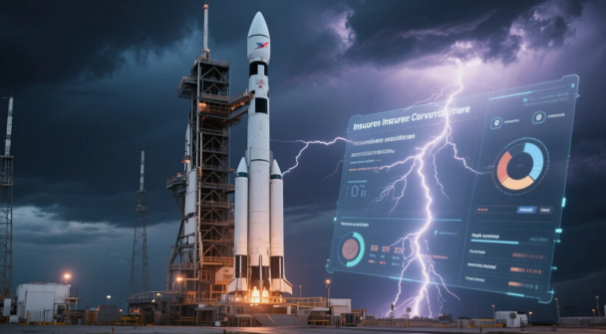As private space ventures accelerate, a specialized insurance market is quietly emerging to protect satellites, rockets, and even space tourists. The global space insurance sector, currently valued at $850 million annually, is projected to triple by 2030 as SpaceX, Blue Origin, and hundreds of satellite operators demand innovative coverage solutions. Unlike traditional insurance models, space underwriters must quantify risks ranging from solar radiation spikes to orbital debris collisions - creating one of the most technically complex insurance verticals in existence today.
The unique challenges of space insurance begin with launch coverage, where a single policy might cover $500 million worth of satellites during their perilous ascent to orbit. Underwriters at Lloyd's of London have developed sophisticated models that account for rocket failure probabilities (currently 5-7% for new launch vehicles), weather delays, and even geopolitical risks at launch sites. What makes these policies extraordinary is their "instant payout" structure - if a rocket explodes during defined launch phases, insurers transfer funds within days rather than months. This rapid response enables satellite operators like Planet Labs to quickly rebuild and relaunch their constellations, maintaining critical Earth observation services for agriculture and climate monitoring.

Once in orbit, satellites face different perils covered by "in-orbit" insurance. A single piece of space debris traveling at 17,500 mph can destroy a $200 million communications satellite, as happened in 2009 when an inactive Russian satellite collided with Iridium 33. Modern policies now include "debris avoidance maneuver" coverage, paying for precious fuel burns when ground controllers must dodge space junk. The most innovative policies even use AI-powered risk modeling that continuously adjusts premiums based on real-time orbital traffic data from the U.S. Space Surveillance Network. Some insurers are experimenting with "parametric space weather" products that automatically pay out when solar flare intensity crosses predefined thresholds known to damage satellite electronics.

The human dimension of space insurance presents even more fascinating developments. As space tourism becomes reality, companies like AXA and Allianz are crafting policies that cover suborbital flight participants for everything from G-force injuries to emergency splashdown scenarios. These policies don't resemble standard life insurance - they're hybrid products combining elements of aviation insurance, extreme sports coverage, and even hostage rescue provisions. Virgin Galactic's ticket holders reportedly pay 100,000−250,000 for comprehensive coverage during their 90-minute space experiences. Meanwhile, NASA's Artemis program has sparked new insurance products covering astronaut medical evacuation from the Moon, with premiums calculated based on lunar phase and solar activity cycles.

What makes space insurance particularly revolutionary is its role as an enabler for the entire industry. Without reliable insurance backing, most commercial space ventures couldn't secure financing. The sector's evolution mirrors maritime insurance in the 18th century, which allowed ship owners to undertake risky but profitable voyages. Today's space underwriters are similarly writing the rulebook as they go, developing new actuarial models for risks never before insured. As orbital infrastructure grows more crowded and valuable - with megaconstellations like Starlink comprising thousands of satellites - space insurance will become not just a financial product, but a critical component of space traffic management and debris mitigation efforts.
The next decade will see space insurance mature from niche product to essential service, much like aviation insurance did in the 20th century. With lunar mining operations and Mars missions on the horizon, insurers are already drafting policies for off-Earth property damage and interplanetary liability. This cosmic extension of risk management represents more than just business innovation - it's a fundamental reimagining of how humanity protects its assets as we become a multi-planetary species.




